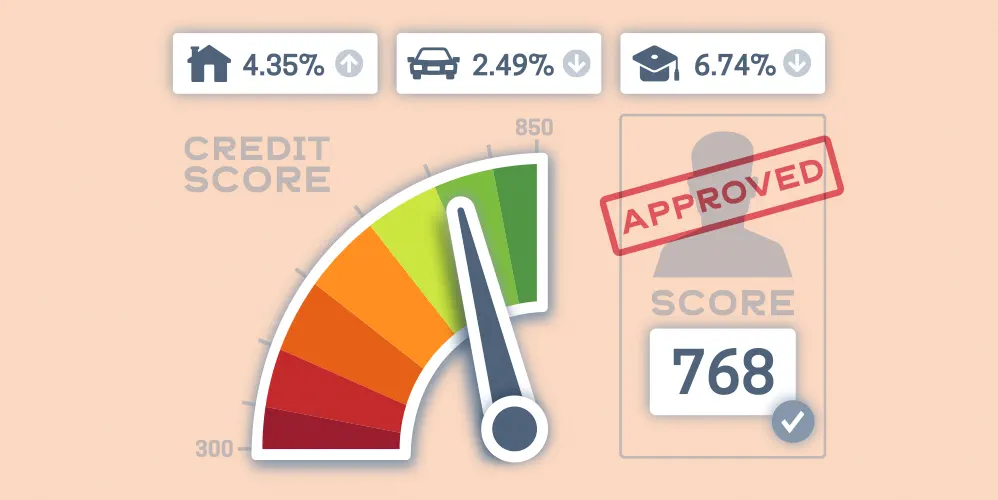
Does a Co-Applicant's Income Improve Your Chances of Getting a Higher Home Loan Amount?
05 Jun 2023

Table of Content
A Home Loan is considered a once-in-a-lifetime opportunity for many people. That is why it would help to maximise your potential loan amount. The best to go about is to opt for a joint Home Loan. Let's find out what is a joint Home Loan and how you can improve your chances of getting a higher Home Loan amount.
What is a Joint Home Loan and What is a Co-Applicant in Home Loan?
A joint Home Loan is one that you can take along with another applicant or a co-applicant. A co-applicant is simply an additional applicant who is just as involved in the underwriting and approval process of the same Home Loan. When you take a loan with a co-applicant, it is deemed as a Joint Home Loan.
A co-applicant may be named as the secondary applicant on the joint Home Loan but may share the same loan repayment responsibilities and benefits that go with a Home Loan. Co-applicant may or may not be joint owner of the property. However, a joint owner has necessary to be a co applicant even if he / she is not having any income (e.g., In case of housewife). If joint owner is not having any income, then eligible loan amount would be calculated solely based on income of main applicant.
Having a co-applicant on your Home Loan can also increase your chances of getting the loan approved. Furthermore, it also helps you procure a higher loan amount to buy the house of your dreams. However, co-applicant must be your close relative.
Benefits of Having a Co-Applicant in Home Loan
Having explained what a joint Home Loan and the definition of a co-applicant is, let's take a look at a few benefits of having a co-applicant on your Home Loan.
1. The bank considers the income of both applicants.
When you apply for a Home Loan, the bank considers various factors that can affect your eligibility. This includes your income, outgoing expenses, credit scores , and so on. While you may be eligible for the loan, you may not get a higher loan amount as the sole applicant. But when you apply for a Home Loan jointly with another applicant, the bank also considers their income. A higher income typically results in a higher loan eligibility amount, enabling you to buy a better property without compromising.
2. A joint Home Loan reduces your loan burden by half.
Another advantage of joint home loan is that your loan burden is reduced considerably. You and your co-applicant can devise a strategy that distributes the loan repayment equally. This way, if either of you is faced with unpredictable circumstances leading to a loss of income, the other can ensure that EMIs are paid on time. Doing this ensures you never default on your EMI payment.
Conclusion
Now that you know what a co-applicant is in a Home Loan, you should consider applying with one. A co-applicant reduces your loan burden and shares financial responsibility.
Also Read - 7 Step-guide to Applying for a Home Loan
So, are you looking for a Home Loan? Apply now with Bank of Baroda!
Popular Articles
Related Articles







Guide to Getting Agriculture Loan: Application, Eligibility & Required Documents



-
Disclaimer
The contents of this article/infographic/picture/video are meant solely for information purposes and do not necessarily reflect the views of Bank of Baroda. The contents are generic in nature and for informational purposes only. It is not a substitute for specific advice in your own circumstances. Bank of Baroda and/ or its Affiliates and its subsidiaries make no representation as to the accuracy; completeness or reliability of any information contained herein or otherwise provided and hereby disclaim any liability with regard to the same. The information is subject to updation, completion, revision, verification and amendment and the same may change materially. The information is not intended for distribution or use by any person in any jurisdiction where such distribution or use would be contrary to law or regulation or would subject Bank of Baroda or its affiliates to any licensing or registration requirements. Bank of Baroda shall not be responsible for any direct/indirect loss or liability incurred by the reader for taking any financial decisions based on the contents and information mentioned. Please consult your financial advisor before making any financial decision.
Home Loan Principal & Interest Rate Explained
Bank of Baroda offers a wide variety of Home Loans that you can choose from, based on your requirements. The bank offers loans of several lakh to a few crores in various Indian cities and towns. With its streamlined, online process, you can now apply for the loan online through the bank's website. You can even get a pre-approval for the loan, select a property based on your eligibility, and submit your documents online. But before you take a Home Loan , you should familiarise yourself with the various terminologies associated with the loan; two of which are most crucial. We are talking about the Home Loan principal amount and interest rates. Let's understand these in detail.
Your Complete Guide -To The Home Loan Disbursement Process
Now that you have a thriving career, you are done living on rent. You have already picked your dream house. You have also narrowed down on the bank that you want to borrow your home loan from-like for example Bank of Baroda, based on low attractive interest rates, flexible EMI options and speedy processing and simple straightforward documentation. Now before you approach a financial institution, it helps to know how a home loan is disbursed. Here is a simple guide to the home loan disbursement process where we discuss the three stages of home loan disbursement.


Leave a Comment
Thanks for submitting your details.